The labor service on Neuwerk by Kurt Eisermann
When visiting Neuwerk, visitors will notice the rotting embankments in the southeast of the island and in the adjacent mudflats. They are a reminder of the work of the labor service since 1932.
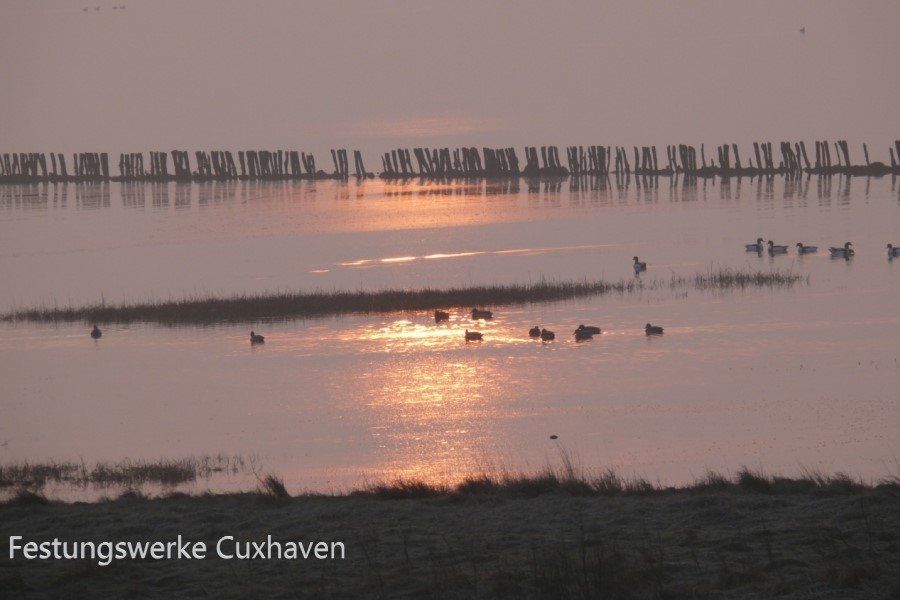
Reste von Lahnungen im Südostteil der Insel Neuwerk / 2021
Quelle:Kurt Eisermann
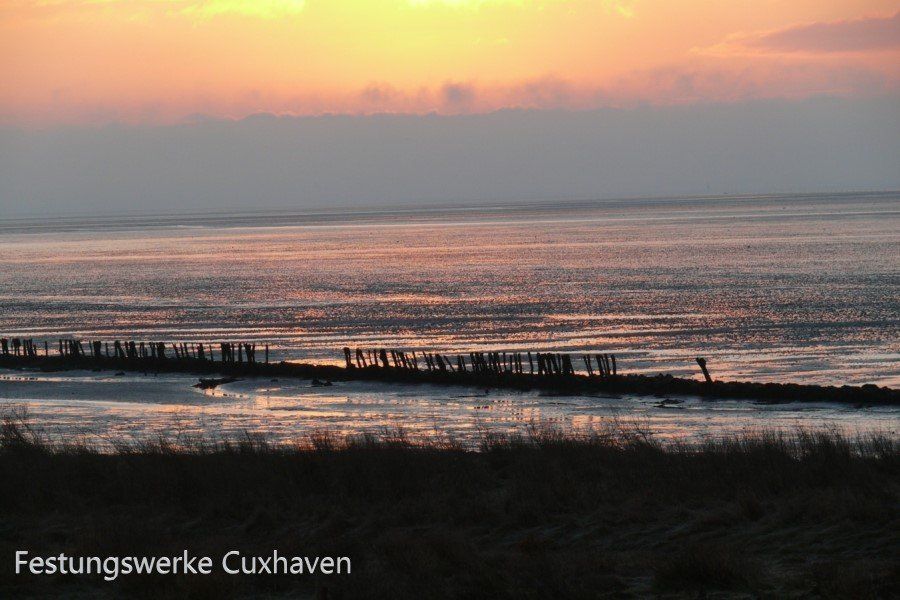
Reste von Lahnungen im Südostteil der Insel Neuwerk / 2021
Quelle:Kurt Eisermann
Im Jahre 1932 kamen junge Männer aus Cuxhaven für 30 Wochen zum Arbeiten nach Neuwerk. Es handelte sich um Arbeitslose, die sich freiwillig gemeldet hatten, um auf der Insel, Arbeiten zum Nutzen der Allgemeinheit zu verrichten. In der schweren Zeit nach dem „Schwarzen Freitag“ 1929 und der Weltwirtschaftskrise hatte die Reichsregierung einen Freiwilligen Arbeitsdienst (FAD) geschaffen, um jungen Arbeitslosen eine Beschäftigung zu geben. Durchgeführt wurden die Maßnahmen von der „Technischen Nothilfe“, der Vorgängerorganisation des THW. In Cuxhaven war der Freiwillige Arbeitsdienst mit Arbeiten bei Duhnen und Arensch beschäftigt. Dort wurden junge Hamburger eingesetzt.
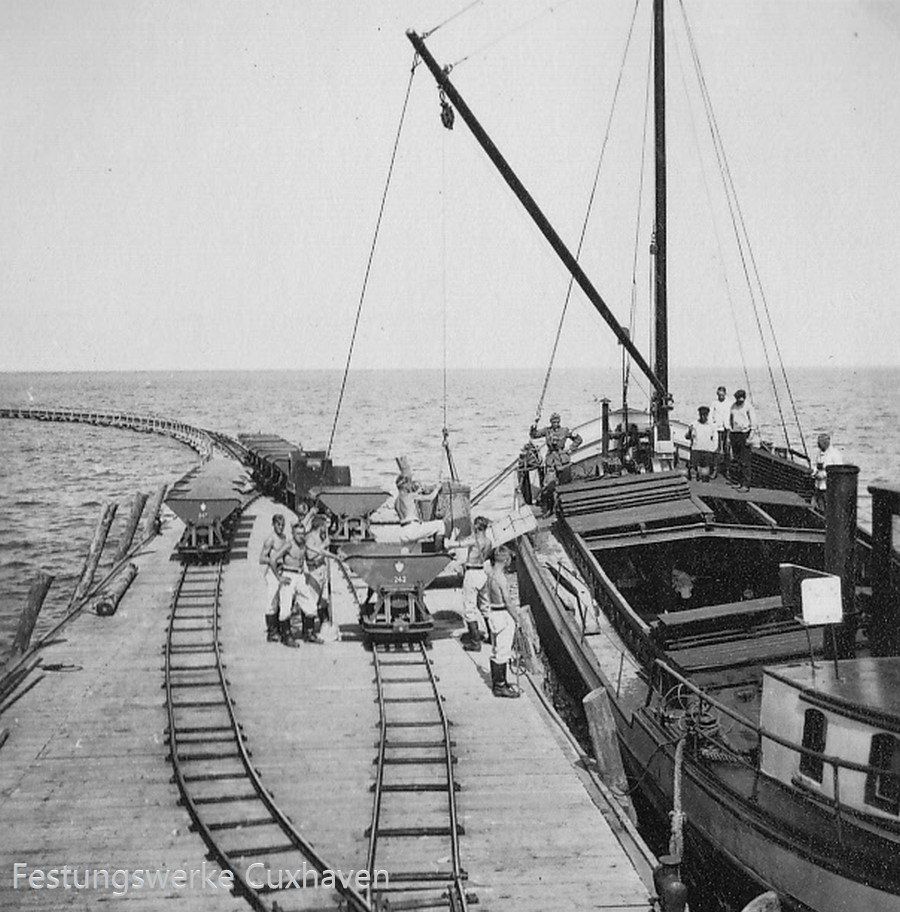
Work materials are loaded from a barge onto a pier, probably on the south side of the island.
Source: Kurt Eisermann
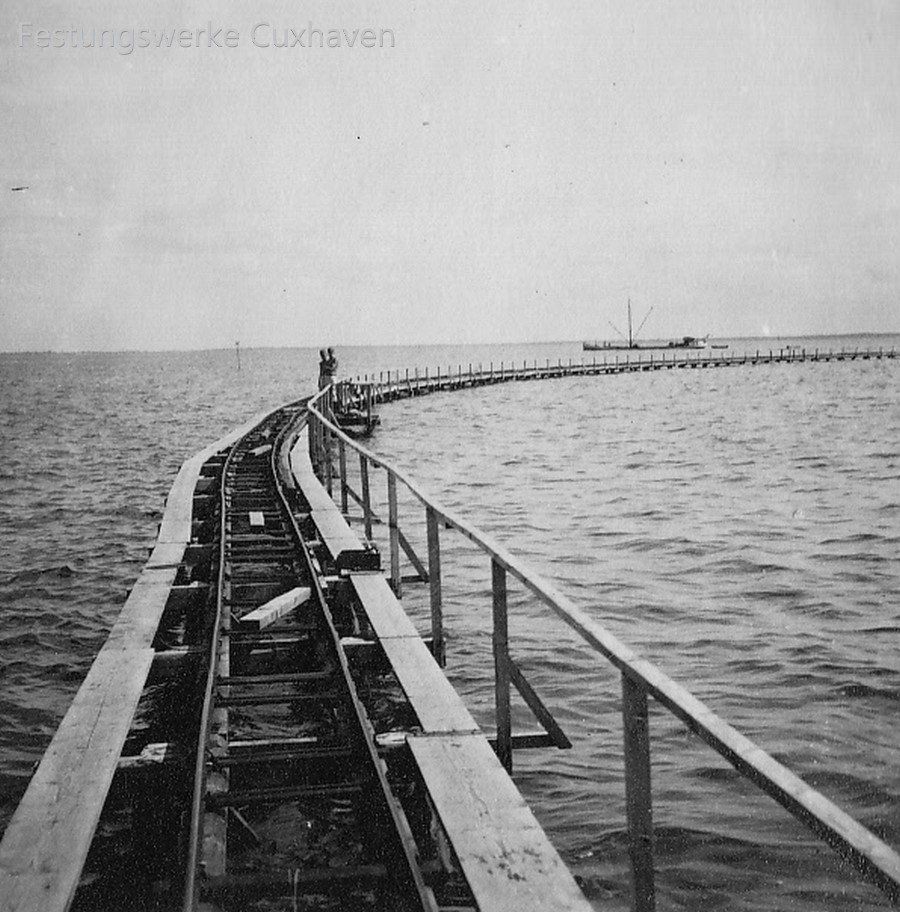
Der provisorische Schienendamm war für den Materialtransport der Lorenbahn errichtet worden. Im Hintergrund das Versorgungsschiff.
Source: Kurt Eisermann
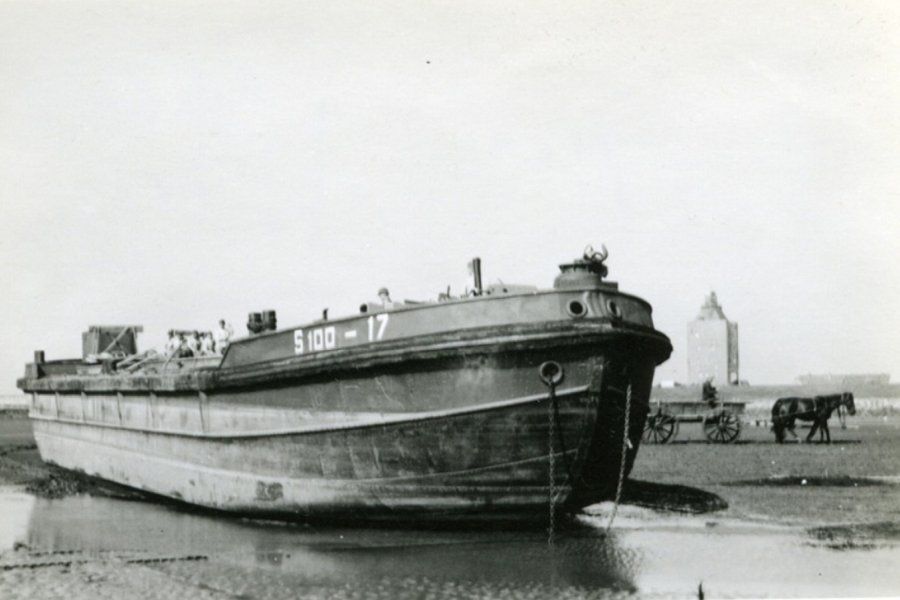
A material barge in front of the south side of NeuwerkSource: MB
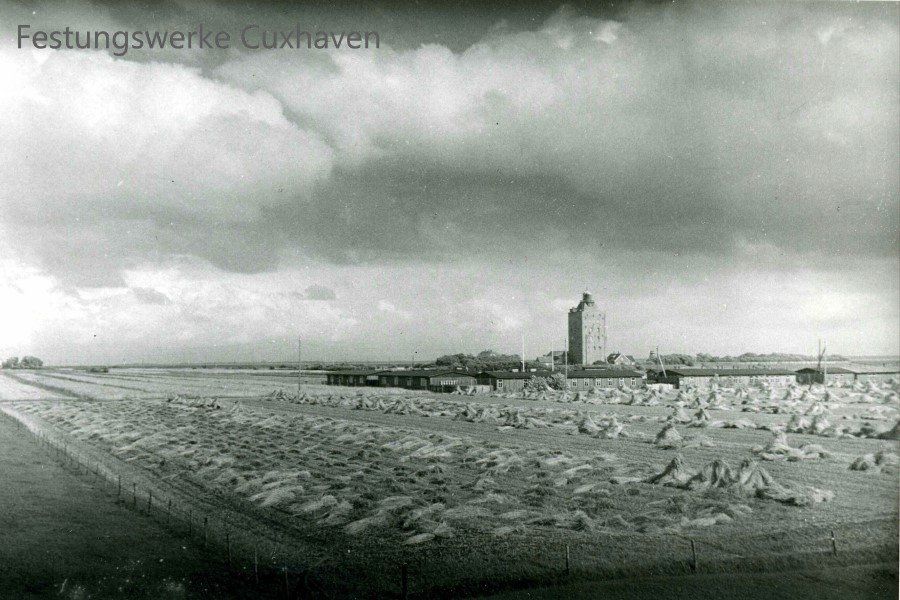
On the right is the wheel warehouse on Neuwerk.Source: Cuxhaven City Archives, photo ID 5c-05872

Sturmflut 1938, die Wellen schlagen die Schutzmole hoch.
Quelle: Kurt Eisermann

After the storm, the pier and the dam of the lorry track were completely destroyed.Source: Kurt Eisermann
On Neuwerk, the volunteers lived in a building on the Turmwurt, the so-called "bakery". They were to carry out bank protection work and gain new land in the southeast. Despite the hard work, the mood was good, according to the Cuxhavener Zeitung of December 2nd, 1932. "So every morning we go out into the mudflats with happy songs and spades on our shoulders." In the summer, sports and swimming were popular leisure activities, while in the winter lectures and the like were often offered. On the mainland, there were often dance and entertainment evenings with guests. Many were reluctant to leave the labor service; not all of them managed to find a job. The CZ emphasizes the good camaraderie and the lack of political disputes in the final phase of the Weimar Republic. After the National Socialists took over the government, the Stahlhelm was given the management of the Voluntary Labor Service until the Reich Labor Service (RAD) was created. From 1935, all young men had to work in the RAD for six months.
The labor service department 8/170, later renamed 3/173, was active on Neuwerk. The department was named after "Berend Jakobsen Karpfanger", a Hamburg admiral who fought against Turkish and Algerian corsairs in the Mediterranean in the 17th century and held out on his burning ship until his death. "For the workers of the Neuwerk department, his life is an example of the highest level of fulfillment of duty." (CZ 04.01.1938)
At times there were up to 200 men on the island; in 1935 a barracks camp was built for them near the current sports field. A camp doctor came to the island to provide medical care.
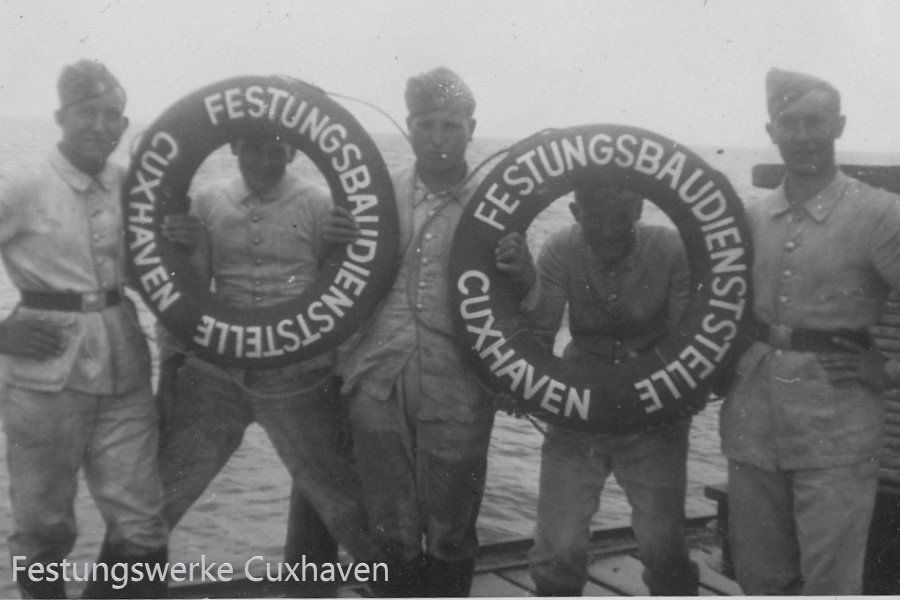
A cable was laid from the mainland to the island to provide electricity for the anti-aircraft searchlights. It was not until the 1950s that a power cable was laid to supply electricity to the Neuwerkers.Source: Kurt Eisermann
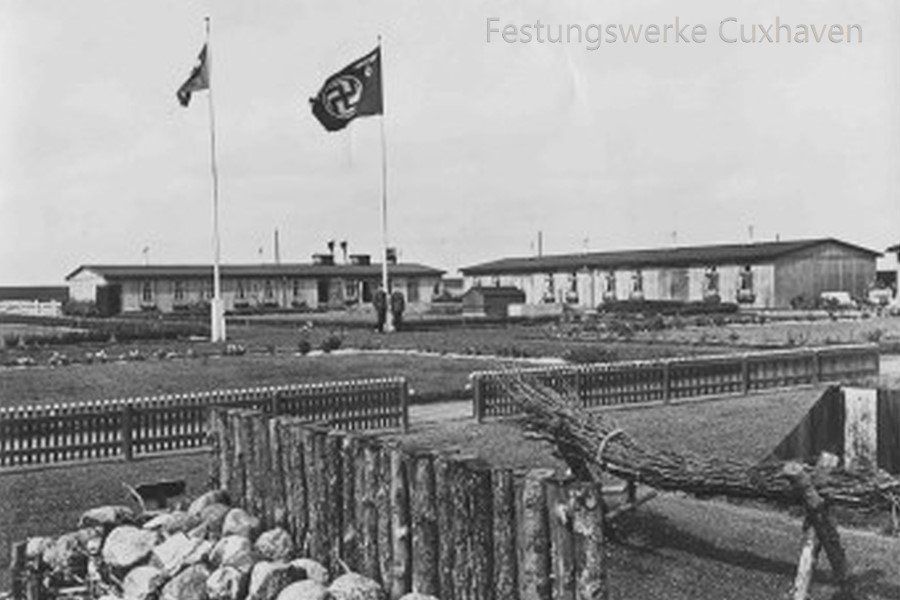
The RAD camp on NeuwerkSource: Kurt Eisermann
The work continued to include bank reinforcement, dyke protection and, above all, the reclamation of new land. The Cuxhavener Zeitung wrote about the work on January 4, 1938: "with the song: We carry the fatherland in our hearts. For we are the Reich.
And we are the dike
About people and work and freedom at the same time.” we went to work.
"The department mainly carries out land reclamation work on the south and southeast coast of the island. Here, by driving stacks and dikes, appropriate still water areas of around 10 acres (2.5 hectares) were created in order to cause the silt to sink. The material for these stacks has to be brought in with a barge, the "Hundebalje" or "Eitzenbalje". The department is busy digging trenches and drainage ditches. The silt that accumulates has to be dug out again and again. According to experience, the annual silting up is around 10 - 15 centimeters.
Another task of the department is the restoration and reinforcement of the shore protection on the north-west and north coast of the island. Here, the force of the storm repeatedly crashes against the shore, which is protected by large boulders, and causes considerable damage. Here, too, all the material for the reinforcement has to be brought to the mudflats by barge. From there, it has to be transported away by lorry."
During the summer months, a small group was sent to Scharhörn, where they helped to raise the island.
Die jungen Männer lebten in Stuben mit 14 Stockbetten. In ihren Spinden befanden sich wenige persönliche Sachen und ihre Kleidung: von der Unterwäsche bis zu Arbeitsanzügen und einem Tuchanzug. Dazu kamen noch Kochgeschirr, Feldflaschen u.ä. Ein großer Raum war Speise- Schulungs- und Aufenthaltsraum.
Work was only done in the morning. In the afternoon, there was sport and training. There was also drill with their important work tool, the spade. There was very little free time. Free time also included cultural events in the evenings and on Sundays.
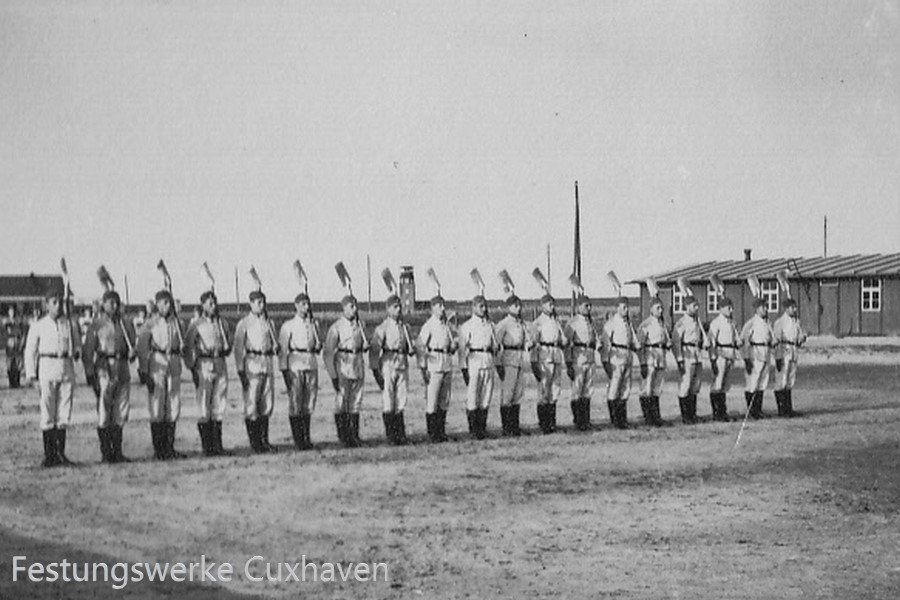
Although the RAD workers were not directly subordinate to the military, the drill was still strict.Source: Kurt Eisermann
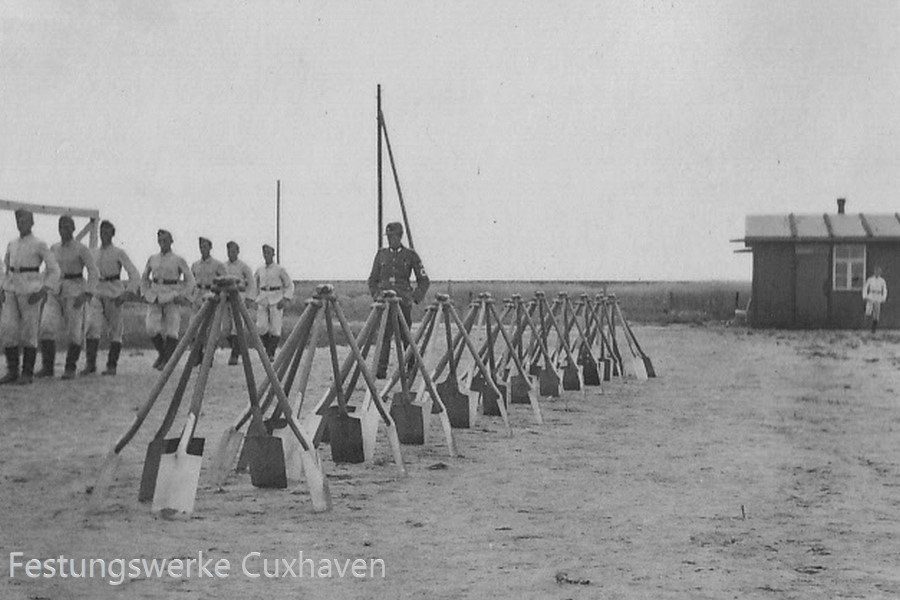
Source: Kurt Eisermann
In his article "Slaving away on the island with the Reich Labor Service Neuwerk." General Household Calendar, Stade 2016, Jörg Petersen lets contemporary witness Heinrich Hilker, who worked for the Reich Labor Service on Neuwerk in the summer of 1938, have his say: "We looked after ourselves completely independently in the camp. We had to do everything ourselves: clean the room, make the beds, cook and bake, wash and repair clothes, empty toilet buckets, look after the grounds and buildings."
In den Zeitungsartikeln wird immer wieder auf die harte Arbeit auf der – im Winterhalbjahr sehr einsamen Insel – und die Kameradschaft hingewiesen. Auch die schönen Seiten werden nicht vergessen. „Nicht nur Sturm weht über Neuwerk. Wenn an stillen Sommerabenden die Sonne über Scharhörn untergeht, wenn das Festland als dunkler Streifen langsam verschwindet und die Arbeitsmänner am Deich sitzen und über das Watt schauen, dann sind das unendlich schöne Stunden. Handharmonikas lassen ihre Weisen erklingen, Geigen mischen sich darein. Alles schweigt und man erlebt tief die Schönheit der Natur.“ (Cuxhavener Tageblatt 08.02.1936) Auf einer Ansichtskarte eines Arbeitsmannes heißt es dagegen : „liebe Grüße von der langweiligsten Insel“.
There is nothing in the newspapers about the relationship between the more than 60 Neuwerk residents and the many workers. However, one can read about considerable tensions in a file in the city archives. In 1934, the group's head of staff complained in letters to the mayor of Cuxhaven. In the extremely dry summer, several workers had laboriously removed the mud from an almost dried-up pond. According to customary law, the workers were to receive the eels living in the pond as a reward. But the night before, the Neuwerk residents had fished out all the eels.
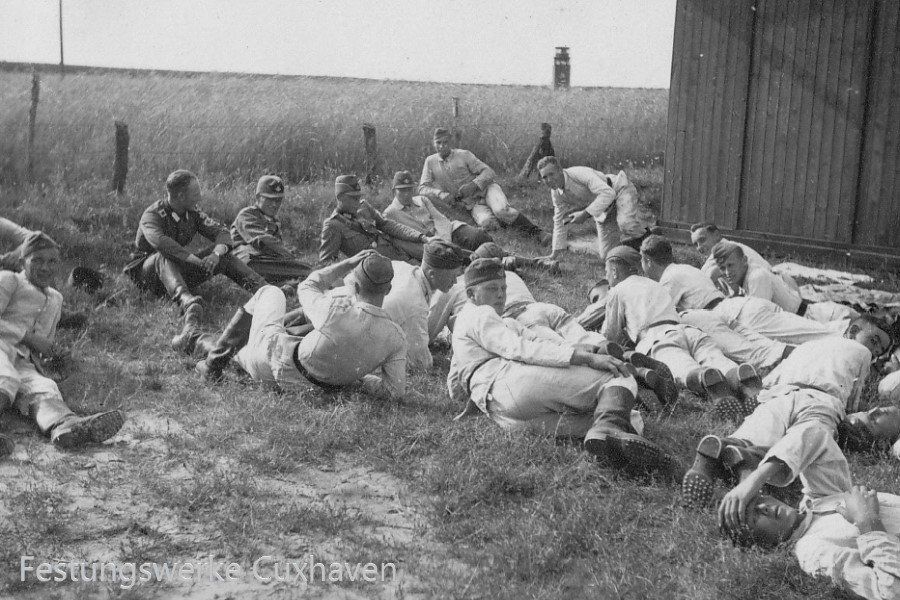
Pause nach dem Untericht
Quelle: Kurt Eisermann

Rechts eine Baracke des Reichsarbeitsdienstes auf dem heutigen Sportplatz.
Quelle: MB

Cleaning the work equipmentSource: Kurt Eisermann

Difficult working conditions, a tracked vehicle (Sd.Kfz.8) is stuck in the mud.Source: Kurt Eisermann
He also has little good to say about the people of Neuwerk. One man from Neuwerk refused to take provisions for the camp on his empty wagon, and two sick workers were not allowed to ride in his wagon. The community leader was accused of "non-National Socialist behavior towards the workers" because when asked to give the workers some sandwiches and milk in the great heat and hard work, the community leader said "that he was not allowed to come to his people with such things."
After the Second World War, the land reclamation work was stopped because the amount of sediment deposited (siltation) was simply too low. All the hard work of the young men was ultimately in vain.
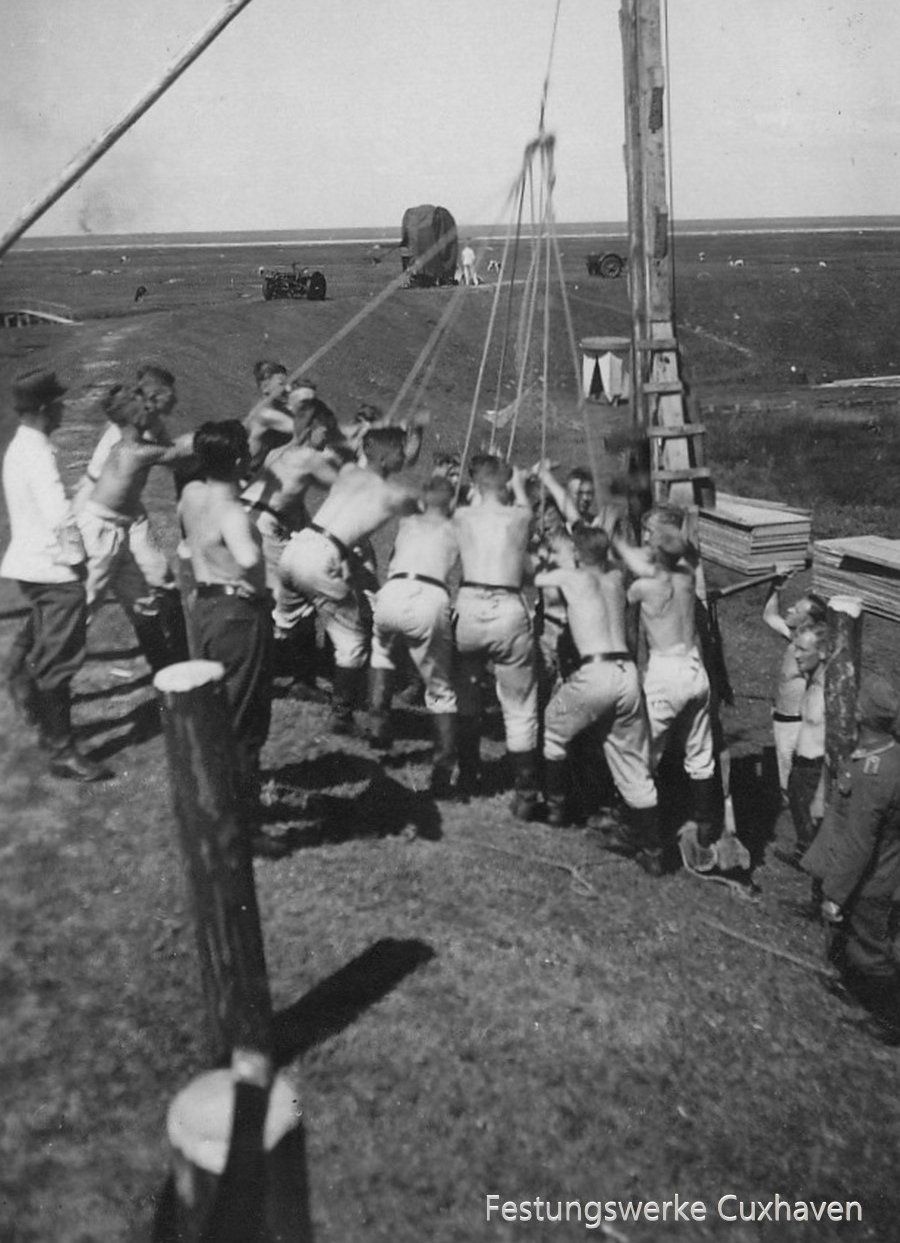
Schwere körperliche Arbeit an der Handramme. Im Hintergrund ein mobiler Flakscheinwerfer.
Quelle: Kurt Eisermann
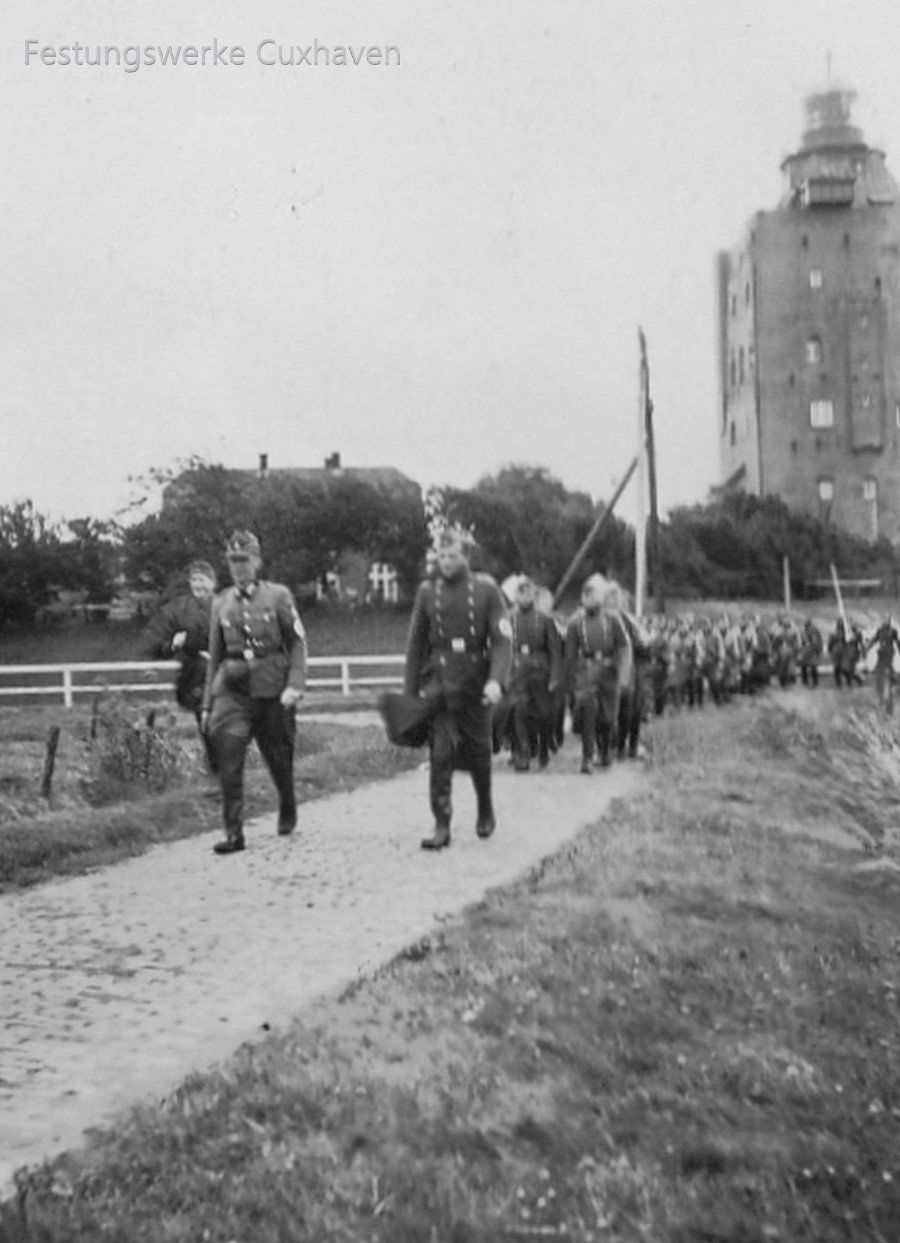
A work crew marches in front of the Neuwerk TowerSource: Kurt Eisermann
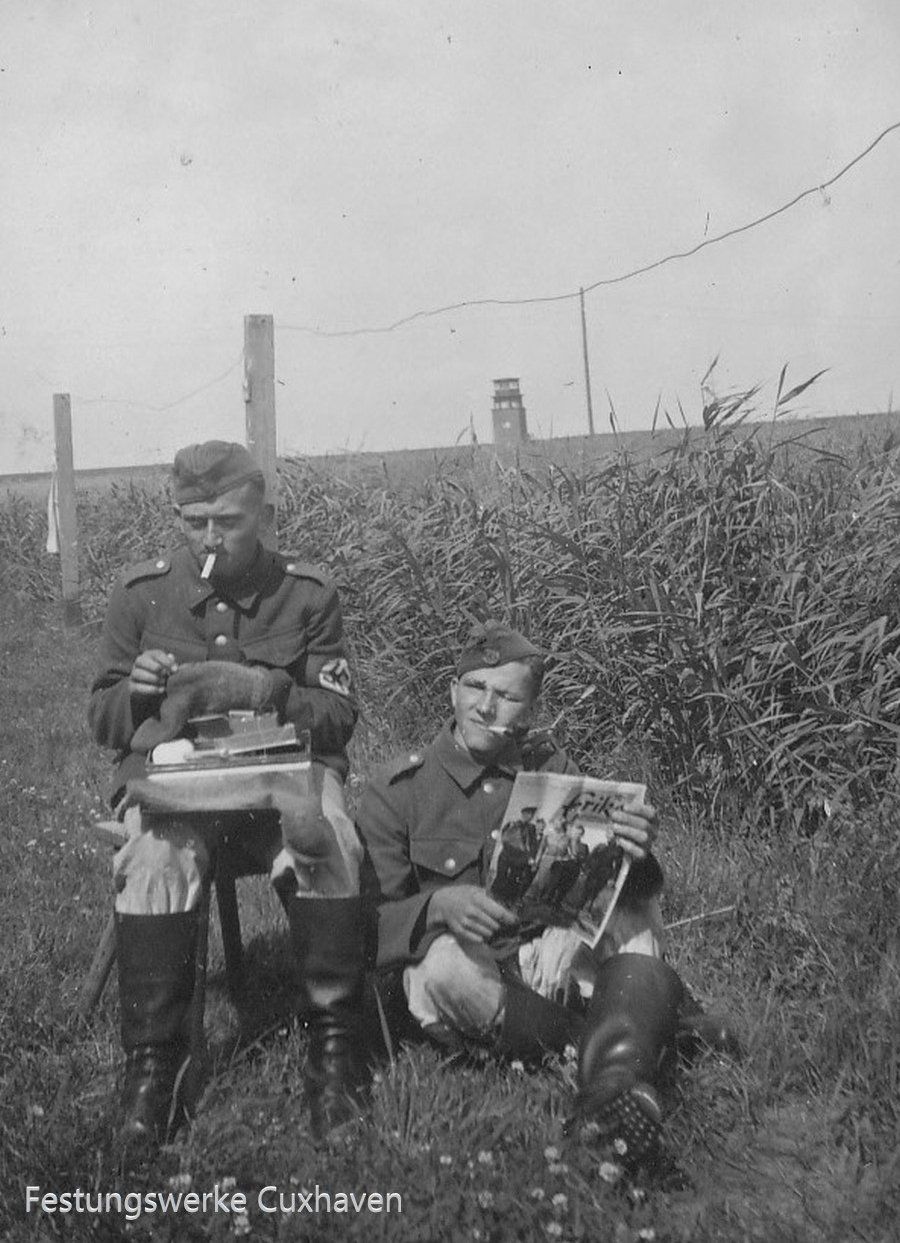
Leisure, cleaning and mending.Source: Kurt Eisermann
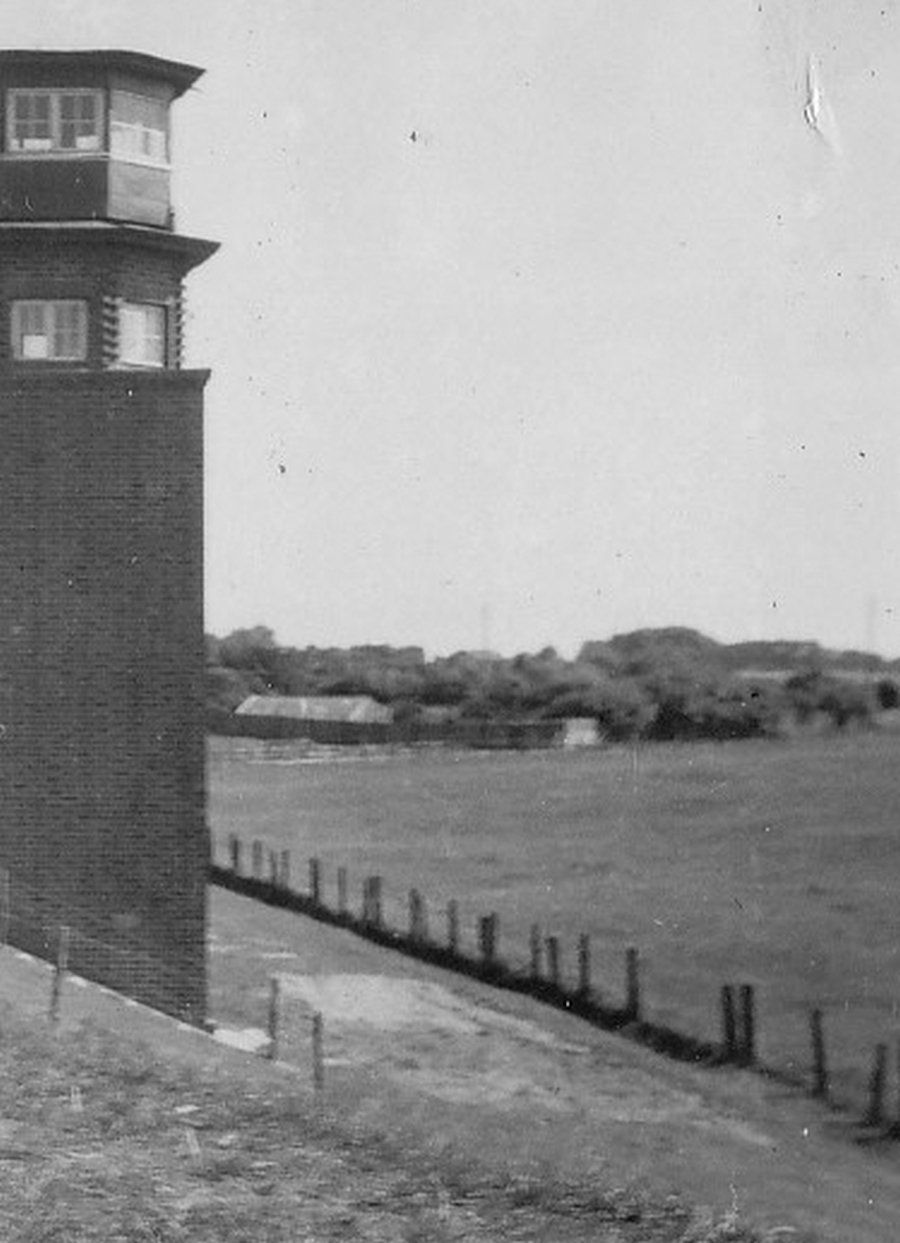
The barracks in the background must have been located directly behind the island school. Their purpose is not yet entirely clear. MBSource: Kurt Eisermann

View from the tower to the north, on the left the camp of the Reich Labor Service Neuwerk (RAD). Behind it an observation tower, to the right of it the current school, then "Haus Seeblick". In the background the north beacon.Source: MB
Quellen: Zeitungen der Zeit und Akte „Streitereien auf Neuwerk“ im Stadtarchiv Cuxhaven
Jörg Petersen, Schuften auf der Insel beim Reichsarbeitsdienst Neuwerk. …Allgemeiner Haushaltungskalender , Stade 2016


